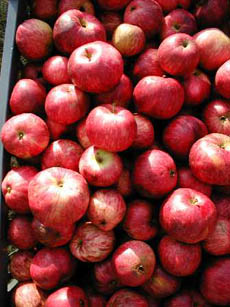PRODUCT: Angry Orchard Hard Cider (Hop’n Mad Apple)
|
Some people are beer people, others are cider people. We’re both. Our beer style of preference is the IPA: Bring on the hops; the more, the better. So we were one of the happiest cider drinkers when Angry Orchard released its new Hop’n Mad Apple hard cider. The cider makers drew inspiration from the hops used to make beer. It wasn’t a stretch: Angry Orchard is owned by Boston Beer Company, makers of Samuel Adams. (It also suggests why, first launched in 2012, Angry Orchard is the number one selling hard cider in the U.S.) It’s an international affair, adding two type of imported hops to American cider apples. Strisselspalt hops from France contribute subtle citrus, herbal and floral notes to the cider; Galaxy hops from Australia impart bright, juicy tropical notes like pineapple and mango. The hops are added to the cider post-fermentation—a process known in the brewing world as dry hopping—to create a fresh hop aroma and a pleasant dry finish without any bitterness. The result is apply, hoppy and delicious, and is now our favorite* of the Angry Orchard cider. Find the retailer nearest you at AngryOrchard.com. |
 We’re hop’n glad for Hop’n Mad hard apple cider. Photo courtesy Angry Orchard. |
|
|
*The Angry Orchard line currently includes Apple Ginger, Cider House, Cinnful Apple, Crisp Apple, Green Apple, Hop’n Mad Apple, Summer Honey and Traditional Dry. Here’s the history of hard cider from Angry Orchard. The history starts with the apples needed to make cider. Here’s the full history, with excerpts below. |
||



